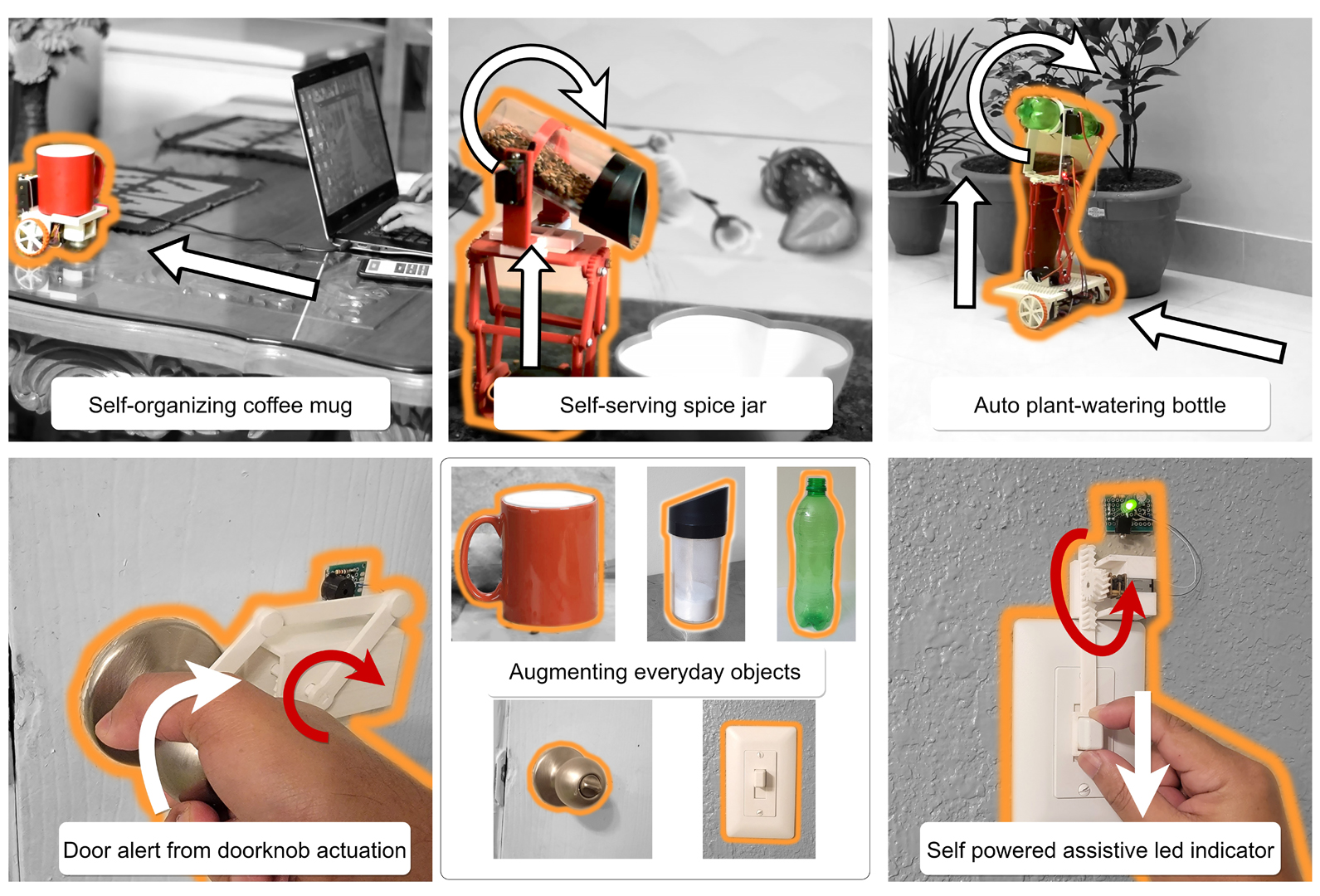“Augmenting Everyday Objects into Personal Robotic Devices”
Conference:
Experience Type(s):
Title:
- Augmenting Everyday Objects into Personal Robotic Devices
Organizer(s)/Presenter(s):
Description:
Augmenting familiar physical objects has presented great potential in upgrading their functions by automation, granting aesthetics, and even changing access. The recent celebration of success in personal fabrication has brought novices where they can augment everyday objects, from automating routine tasks with mobilized smart devices to devising self-sustaining smart objects by harvesting energy from involved daily interactions, for example. While the overall process involves a line of steps of capturing specifications, design mechanisms and fabricating the parts, it remains challenging for non-experts as it demands domain expertise in robotics, design, programming, and even mechanical engineering.
We introduce a series of augmented robots, smart domestic devices that are augmented from everyday objects, leveraging personal fabrication to assist daily essential interactions. Through user-demonstration of desired motions, 3D printed attachment mechanisms are auto-generated to build personal robotic devices that automate routine tasks and harvest energy.
References:
[1]
Abul Al Arabi, Jiahao Li, Xiang’Anthony Chen, and Jeeeun Kim. 2022. Mobiot: Augmenting Everyday Objects into Moving IoT Devices Using 3D Printed Attachments Generated by Demonstration. In CHI Conference on Human Factors in Computing Systems. 1–14.
Digital Library
Google Scholar
[2]
Xiang’Anthony’ Chen, Jeeeun Kim, Jennifer Mankoff, Tovi Grossman, Stelian Coros, and Scott E Hudson. 2016. Reprise: A design tool for specifying, generating, and customizing 3D printable adaptations on everyday objects. In Proceedings of the 29th Annual Symposium on User Interface Software and Technology. 29–39.
Digital Library
Google Scholar
[3]
Jeeeun Kim, Anhong Guo, Tom Yeh, Scott E. Hudson, and Jennifer Mankoff. 2017. Understanding Uncertainty in Measurement and Accommodating Its Impact in 3D Modeling and Printing. In Proceedings of the 2017 Conference on Designing Interactive Systems (Edinburgh, United Kingdom) (DIS ’17). ACM, New York, NY, USA, 1067–1078. https://doi.org/10.1145/3064663.3064690
Digital Library
Google Scholar
[4]
Jiahao Li, Jeeeun Kim, and Xiang’Anthony’ Chen. 2019. Robiot: A Design Tool for Actuating Everyday Objects with Automatically Generated 3D Printable Mechanisms. In Proceedings of the 32nd Annual ACM Symposium on User Interface Software and Technology. 673–685.
Digital Library
Google Scholar
[5]
Xiaoying Yang, Jacob Sayono, Jess Xu, Jiahao Nick Li, Josiah Hester, and Yang Zhang. 2022. MiniKers: Interaction-Powered Smart Environment Automation. Proc. ACM Interact. Mob. Wearable Ubiquitous Technol. 6, 3, Article 149 (sep 2022), 22 pages. https://doi.org/10.1145/3550287
Digital Library
Google Scholar





